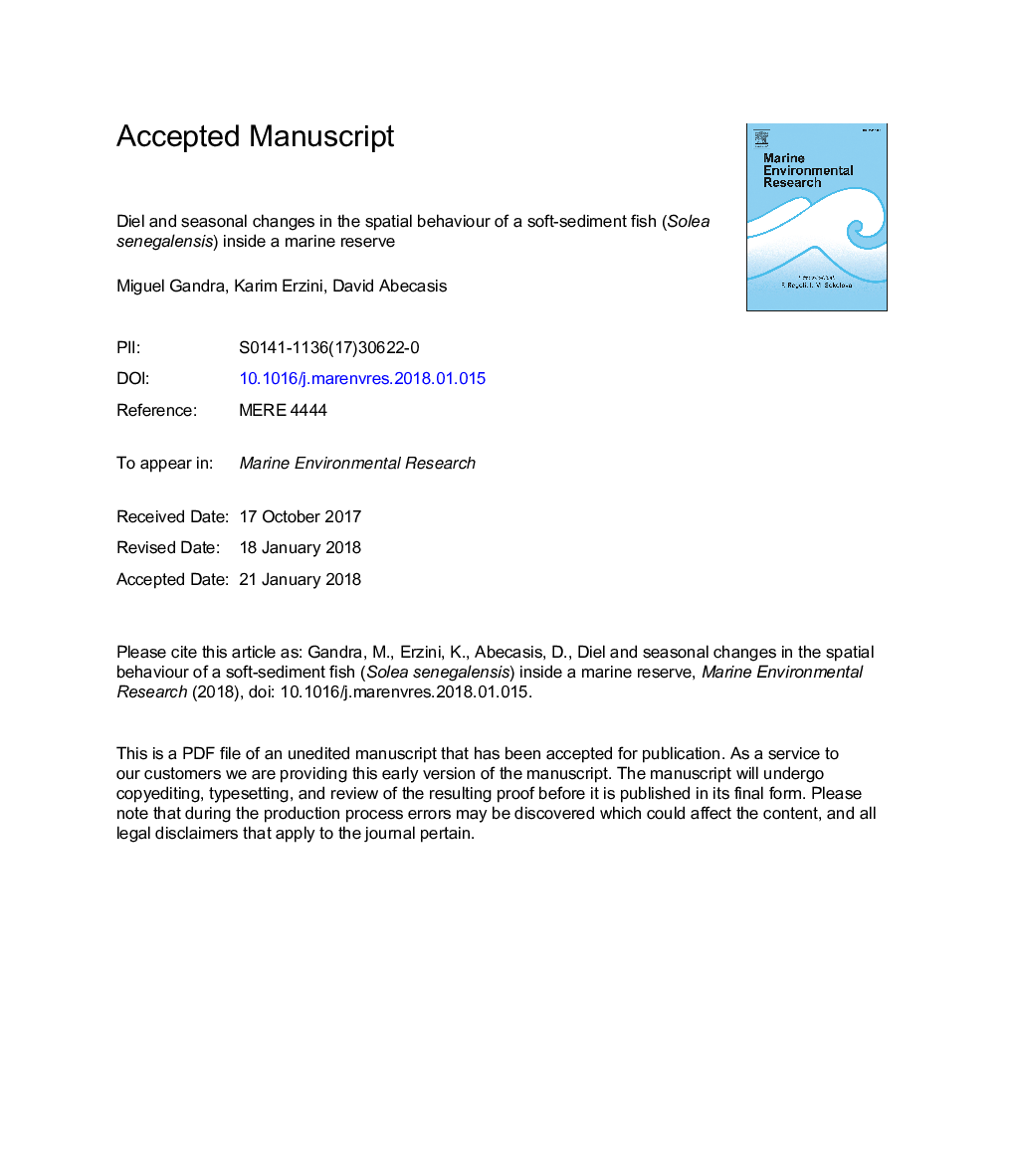| Article ID | Journal | Published Year | Pages | File Type |
|---|---|---|---|---|
| 8886360 | Marine Environmental Research | 2018 | 32 Pages |
Abstract
The protection provided by marine reserves directly depends on the short and long-term movement patterns of local organisms. Although there has been an increase in research assessing the behavioural patterns of fishes in reef-based habitats, there is still a paucity of studies addressing the benefits of marine protected areas (MPAs) for soft-sediment species. Here, we investigated both diel and seasonal shifts in spatial behaviour of the Senegalese sole, Solea senegalensis, within a recently-established marine reserve using long-term passive acoustic telemetry. Results showed variable levels of site attachment, with nearly half of the fish (nâ¯=â¯8) disappearing from the monitored area within 30 days, and the remaining (nâ¯=â¯9) being detected for periods up to 293 days and spending 95% of their time within an average area of 0.88â¯Â±â¯0.46â¯km2. Although detection frequency was higher during daytime periods, the larger home range areas and greater movement observed during nighttime periods are consistent with a nocturnal activity regime, which might increase the vulnerability of S. senegalensis to illegal fishing. Additionally, patterns observed during the spawning season suggest the existence of shifts in habitat use linked with reproductive activity, opening the door to further research on soles' fine-scale interaction dynamics. Overall, this study provides novel insights into the ecology of a flatfish species and suggests that small no-take areas encompassing suitable soft-sediment habitats can offer adequate protection to at least part of the Senegalese sole population.
Keywords
Related Topics
Physical Sciences and Engineering
Earth and Planetary Sciences
Oceanography
Authors
Miguel Gandra, Karim Erzini, David Abecasis,
